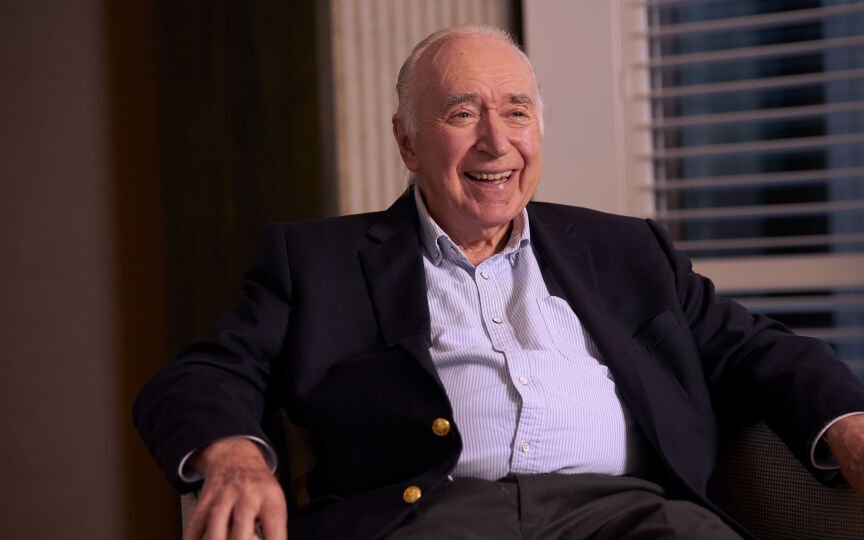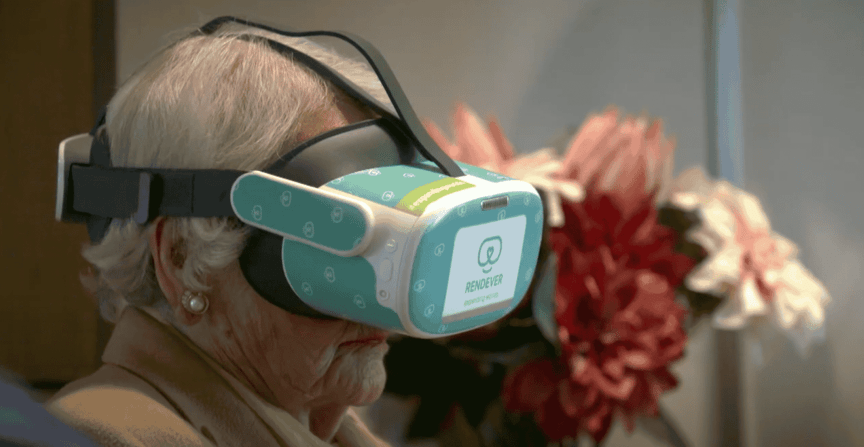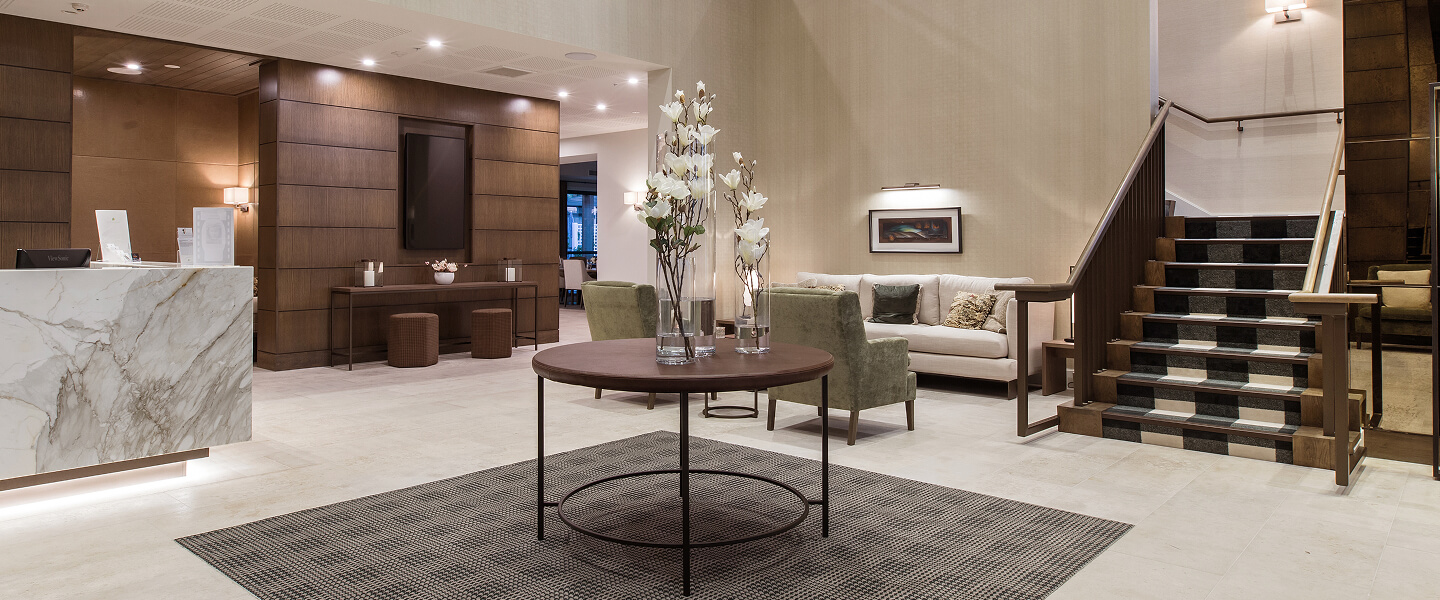The Russley News

Diplomacy Wins
Living Magazine
18 November, 2025
He once quipped that as a trained lawyer, a politician and an investment banker, he had somehow chosen three of the most unpopular professions in the world. However, Sir Jim McLay’s pedigree in international relations and diplomacy across decades – coupled with his frontline role during some of New Zealand politics’ most turbulent times – have ensured his is a life replete with stories and successes....

Rendever: Opening New Doors for Aged Care Through Virtual Reality
Corporate News
1 October, 2024
Generus Living has been named a finalist for the prestigious 2024 Aged Care Association/ EBOS Healthcare Excellence in Care Awards - Innovative Delivery category. This recognition highlights Generus Living’s commitment to advancing aged care through groundbreaking innovations like Rendever, a virtual reality (VR) technology designed specifically for the aged care industry....

Debbie Scott's Artistic Return
Russley Events
6 May, 2024
Debbie Scott’s artistic journey came full circle when she returned to her first love after over two decades – painting. During high school, she had a passion for painting, and in 1997, she graduated with a media arts degree from university. "She reflects, 'After art school, I lacked the confidence to pursue painting as a career. So, I ventured into graphic design, a profession which fit my role as a mother for the next 25 years.”...

Something for everyone at the Arts Canterbury Art Show
Russley Events
26 April, 2024
An extensive range of art will be on display at the annual Arts Canterbury Art Show at The Russley Village next month. The event, held 11-12 May, will exhibit the work of 40 local artists – from beautiful paintings, drawings and other unique pieces, to jewellery, pottery and glass creations....

Keeping Mind & Body Engaged
General Interest
14 August, 2023
The Russley Village Ashley Care Suites introduced Poi exercises as part of their physiotherapy programme to explore rhythmic body movements to stimulate and engage residents physically and mentally. The programme has been a huge success....

Russley Village Gardens Continue to Win Awards
Russley Village
29 May, 2023
Award-winning gardeners, Shaeron Holmes and Amanda Riordan, as well as Russley Village residents have once again been recognised for excellence in their craft. The pair received an array of prizes at the recent Christchurch Beautifying Association Summer garden awards, including 11 certificates and the Peter Lawrence Challenge Trophy, in the Retirement Villages and Rest Homes Category....

Meet The Artists Of Arts Canterbury - Leonie Clent
Russley Events
10 May, 2023
I’ve been painting for a long time. I was a nurse in Australia and New Zealand for 15 years, and during that time I was a member of the religious order of the Little Company of Mary, known as the Blue Sisters. Those years of commitment and services had a profound influence on my life and artistic development....

Meet the Artists of Arts Canterbury - Margaret Palmer
Russley Events
6 May, 2023
The Russley Village resident Margaret Palmer, 88, went from painting china in her spare time, to creating art on canvas. Painting china was “in vogue” back then, she says. After enjoying the hobby for a few years, a friend invited her to join tutored art classes – which she attended up until just five years ago....

Meet the Artists of Arts Canterbury - Elizabeth Rosa
Russley Events
12 May, 2023
I was always interested in art when I was younger, but actually studied to be an engineer, so I have a master’s degree in engineering. I didn't do art for quite a few years while I was studying or in my first years working. I got back into painting about five years ago and have been doing it a lot since then!...

Meet the Artists of Arts Canterbury - Therese Boustead
Russley Events
8 May, 2023
My career was in science, tertiary mathematics and statistical analysis. Nearing retirement, I decided to take up art as a way of capturing nature while my husband spent time taking photographs whenever we travelled around New Zealand....

Meet the Artists of Arts Canterbury - Esther Gane
Russley Events
3 May, 2023
Since joining Arts Canterbury I have exhibited at many of local Exhibitions. I enjoy being part of them because not only is it a chance to sell my art, it also serves as a great opportunity to catch up with fellow artists and meet new people....

Knitting for a Cause: The Russley Village Supports Landmine Victims in Ukraine
Russley Village
30 April, 2023
At the Swiss Foundation for Mine Action, a non-governmental organisation with a mission to clear landmines and unexploded munitions around the world, Tony Connell is doing his part to reduce the number of people killed each year by these hidden dangers. With more than 4000 people, half of whom are children, dying annually from landmines, the importance of Connell's work cannot be overstated....

Ashley Suites: Delivering Positive Clinical Outcomes for Residents
Russley Village
30 November, 2022
The award-winning care facility at The Russley Village in Christchurch is delivering positive clinical outcomes for residents, with its considered environment, elegant design, and a refreshed approach to residential aged care....

Thriving Communities: Intergenerational Connection
Russley Village
18 November, 2022
Intergenerational connection and learning have always been a fundamental part of flourishing, thriving communities and cultures. The last 50 years, however, have seen a growing trend towards age segregation in various facets of life, including school education, the workplace and within the extended family and broader social life. This has led to reduced opportunities for different generations to learn from one another and has also contributed to social isolation, and in some cases to poorer health and a lower quality of life outcomes....

Making Retirement Sustainable: Generus Living Leading the Way
Corporate News
1 September, 2022
Generus Living Group strive to make a difference in providing upscale sustainable living environments. Over the last 10 years the luxury retirement village operator has built a strong reputation for developing and operating outstanding retirement villages in Auckland, Tauranga and Christchurch....

Sustainable Retirement Living
Russley Village
21 July, 2022
Sustainability is so much more than just diligently separating our waste or going "green". It is a purposeful way of life, with a focus on well-being and health, as well as the environment. We all have a role to play in building resilience in this changing world....

Meet the Artists of Arts Canterbury - Nikki Parker
Russley Events
6 May, 2022
Local artist Nikki Parker, the talented illustrator behind Absconditus Creations, has been creating art since she could hold a pencil. “I’ve been focusing on illustration, in ink and watercolour or acrylics,” she explains....

Meet The Artist of Arts Canterbury - Jackie Hancock
Russley Events
3 May, 2022
For Pegasus-based fused glass artist Jackie Hancock, art is her happy place (along with the beach/water and a good book!). From admiring the stained-glass windows of churches at a very early age, she went on to study "Music and Art For Community" for her first degree, specialising in stained glass....

Meet the Artists of Arts Canterbury - Dave Shepherd
Russley Events
2 May, 2022
As a Christchurch-based photographer, Dave Shepherd considers himself spoilt for choice, with beautiful vistas and stunning backdrops right here on our Cantabrian doorstep and it’s where he draws much of his inspiration from....

Grandparent's role is society valued
General Interest
18 November, 2020
Grandparent: family historian, nurturer, mentor, role model, playmate, wizard, and hero. There is no doubt that grandparents play a significant role in the lives of many New Zealand families, providing support across a wide range of areas....

Super powered snaps
General Interest
17 November, 2020
It seems that since mobile phones first burst onto the technological scene in the 1980s there’s been no limits to their capabilities. Now even the cameras on our phones are capable of doing cooler things than ever before. We check out the top tasks your phone camera can do that doesn’t include snapping selfies....

Sunny side up
General Interest
17 November, 2020
It’s long been said that we need to look at the bright side of life, but it turns out this is so much more than a cute little cliché – there’s some serious science behind it! Evidence shows that positive people are less stressed, healthier and can even live longer, so we’ve pulled together our top tips to let the light of positivity shine through....

Setting new standards
Russley Village
16 November, 2020
Featuring an architectural mix of traditional villas, terraced houses, sophisticated apartments and the brand-new Ashley Care Suites, anchored by an award-winning $10 million ‘clubhouse’, the village really is a village in every sense of the expression....

Nurturing memory, clarity and cognition
General Interest
16 November, 2020
Your brain isn’t ever something you were told you needed to take care of however, emerging evidence shows the importance of certain dietary patterns, nutrients and lifestyle factors in slowing or preventing cognitive decline and neurological disorders. Whether your goal is to stay as sharp as a tack or simply nurture a quick-witted and stronger memory, there are so many things we can be doing to boost our brain health....

Arts Caterbury - Introducing: Quilliam Collister
Russley Village
20 February, 2020
When Quilliam Collister takes pen or paintbrush to easel, magic happens. The Arts Canterbury event at The Russley Village, 21-23 February, will give art-lovers the chance to own and covet some of this distinctive magic....

Taking care of the future - Enduring Power of Attorney
General Interest
27 June, 2019
If you lose the ability to organise your own affairs, it’s essential to have somebody available to do it on your behalf. The hitch is that it must be written in a legal document called an Enduring Power of Attorney (EPA), and that this must take place before you need it....

Documenting humans & history - Book Review
General Interest
27 June, 2019
Invaluable wisdom, charismatic charm, a profound appreciation of the past and present, and a fundamental appreciation of the fact that tomorrow is never promised - it all comes with the beautiful thing we call ‘age’. Celebrated author and photographer Renée Hollis knows better than anyone what our mature generations contribute to our lives by way of knowledge and emotional intelligence....

The Ashley Suites and Serviced Apartments: luxury personified
Russley Village
25 June, 2019
Quality of life is as much about where we live as it is about how we feel. In fact, a positive and encouraging living environment plays a significant role in enhancing our social, physical, and emotional wellbeing...

Artist Profile - Estelle Jarvis
Russley Village
28 March, 2019
Fabric has enormous potential in the right hands; Estelle Jarvis makes magic with it. Fortunately for art-lovers and attendees at the Arts Canterbury exhibition being held Saturday 30 and Sunday 31 March, from 10am-3pm, at the Russley Village, they can invest in one or more of her amazing artworks....

A Creative Partnership
Russley Events
19 March, 2019
A special partnership has given rise to a special event. On Saturday 30 and Sunday 31 March, from 10am-3pm, The Russley Village will play ever-generous host to an Arts Canterbury exhibition showcasing the outstanding creativity of 40 local artists....

Bay of Plenty eco retirement village hits ground running
Corporate News
26 July, 2018
The new eco-retirement village on Grenada Street, Papamoa, is set to inject over $250 million into the Bay of Plenty region’s booming economy and provide 350 new homes to the area – with a dozen villas snapped up in the first week on the market....

A life less ordinary
General Interest
24 May, 2018
Annabel Langbein is a beloved daughter of the nation; her locally focused, user friendly recipes and loyalty to the food landscape in New Zealand make it impossible not to cherish and celebrate all she offers. It also helps that she is very down to earth....

2018 NZ Commercial Property Awards Recognise Russley Village Excellence
Russley Village
22 May, 2018
Christchurch’s premium retirement village, The Russley Village, has scooped two prestigious awards for its new state-of-the-art, multi-purpose ‘Homestead’ building at the recent New Zealand Commercial Project Awards....

Relax with D.I.Y. Massage
General Interest
16 April, 2018
Life is fast-paced and to maintain balance it is important to reduce stress by incorporating a healthy mix of leisure activities and relaxation techniques to relax and unwind. One of the best ways to achieve relaxation is through massage, locating areas of tension and then applying pressure to work out waste....

Keeping Connected
General Interest
30 January, 2018
Today's technology and online tools provide a variety of ways to keep in close contact with extended family and young grandchildren. It's relatively easy to remain close and receive a virtual dose of kisses, hugs and updates, no matter how far apart you may be....

Butchers are back
General Interest
30 January, 2018
It doesn't seem like so long ago that we all supported small local businesses. Now while most of us have nothing against supermarkets, they are rather convenient after all, some of us do miss the relationships that were built up over the years, popping into small independently owned stores, back in the day....


















































